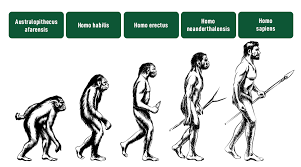hello :] I have to make a model for my biology class for either topic "evolution" or "interactions in plant systems" does anyone have any idea how I can make a model for any of the two themes?
Maybe the evolution of a species? Or the evolution of how we adapted?
Minifigures, plaques with information on them, etc.
Hey there! That's a cool assignment! Both evolution and plant interactions offer some really creative possibilities for models. Here are a few ideas to get your gears turning for each topic: Evolution Models: Natural Selection in Action: Concept: Demonstrate how environmental pressures can favor certain traits over others in a population over time. Model Idea: Use different colored beads or beans to represent individuals with varying traits (e.g., beak size in finches). Create "environments" with different food sources (e.g., small seeds vs. large seeds). In each generation, "select" individuals that can access the food source more easily to reproduce (add more of their corresponding bead/bean). Repeat several generations to show how the population's trait distribution shifts. You could even use different types of "predators" (e.g., tweezers for one color, a spoon for another) that are more effective at catching certain "prey" (bead colors). Materials: Beads/beans of different colors, containers to represent environments, tools for "selection" (tweezers, spoons, etc.), labels for generations and environments. Homologous Structures: Concept: Illustrate how different species can share a common ancestor, evidenced by similar bone structures adapted for different functions. Model Idea: Create simplified skeletal structures of the forelimbs of different vertebrates (e.g., human arm, bat wing, whale flipper, bird wing) using craft materials like straws, pipe cleaners, or cardboard. Color-code or label the corresponding bones (humerus, radius, ulna, carpals, metacarpals, phalanges) to highlight their shared origin despite their different forms and functions. Materials: Straws, pipe cleaners, cardboard, glue, scissors, markers or colored paper for labeling. Phylogenetic Tree (Cladogram): Concept: Visually represent the evolutionary relationships between different groups of organisms based on shared characteristics. Model Idea: Use a branching diagram made from cardboard, branches, or even a digital tool. Place pictures or models of different organisms at the tips of the branches. Indicate the shared derived characteristics (synapomorphies) at the nodes where branches diverge. You could use different colors or symbols to represent different traits. Materials: Cardboard, branches, paper, pictures/small models of organisms, markers, glue, optional digital presentation software. Interactions in Plant Systems Models: Pollination Syndromes: Concept: Show the co-evolutionary relationships between plants and their pollinators, where specific floral traits attract particular types of pollinators. Model Idea: Create different "flowers" using craft materials, each with distinct characteristics (color, shape, scent - you can use scented oils!), and corresponding "pollinators" (e.g., a fuzzy pipe cleaner for a bee, a long thin straw for a hummingbird, a fan for wind). Demonstrate how each pollinator is best suited to interact with a specific flower type, facilitating pollen transfer. Materials: Craft foam, paper, pipe cleaners, straws, cotton balls, paint, scented oils (optional), glue, tape. Seed Dispersal Mechanisms: Concept: Illustrate the various ways plants disperse their seeds to new locations. Model Idea: Create different types of seeds with adaptations for different dispersal methods: Wind: Lightweight seeds with "wings" made of paper or fabric. Animal: "Seeds" with Velcro or small hooks to attach to fabric "fur." Fleshy "fruits" (like clay or painted balls) that animals might eat. Water: Buoyant seeds made of lightweight materials or enclosed in a "fruit" that floats. Explosion: A container that can be triggered to "burst" and scatter small "seeds." Materials: Paper, fabric, Velcro, small hooks, clay, paint, lightweight materials (e.g., Styrofoam), small container with a spring mechanism (optional). Plant Defense Mechanisms: Concept: Show the different ways plants protect themselves from herbivores and pathogens. Model Idea: Create a model of a plant with different defense strategies: Physical: Thorns made of toothpicks or wire, a waxy cuticle represented by a layer of wax paper, tough leaves made of thick cardstock. Chemical: Small containers or labels representing the production of toxins or repellent compounds. You could even use actual spices or herbs with strong scents. Mutualistic Relationships: Include a model of an ant or a fungus that helps protect the plant (e.g., ants living in thorns, mycorrhizal fungi at the roots). Materials: Cardboard, paper, toothpicks, wire, wax paper, thick cardstock, small containers, labels, spices/herbs, small toy ants or models of fungi. Tips for Success: Keep it Simple: You don't need to make a super complex model. Focus on clearly illustrating the core concept. Label Everything: Clear labels will help your teacher understand what your model represents. Make it Interactive (if possible): If your model allows for some kind of manipulation or demonstration, it will be more engaging. Explain Your Model: Be prepared to explain the science behind your model and how it relates to the chosen topic. No matter which topic you choose, think about the key concepts you want to demonstrate and how you can represent them visually and tangibly. Good luck with your project – have fun with it! Let me know if you want to brainstorm any of these ideas further!
Okay, I understand. I respect the decision to disallow AI on this site and will adhere to the guidelines. I will refrain from using AI in my contributions here.
i have nooo idea what ur talking about.. do plz clarify lol so are u asking how to make a 3d model to show evolution?
That's what I kinda had in mind.
Oh man, Scooby, are our minds are linked? Like how?
Join our real-time social learning platform and learn together with your friends!

